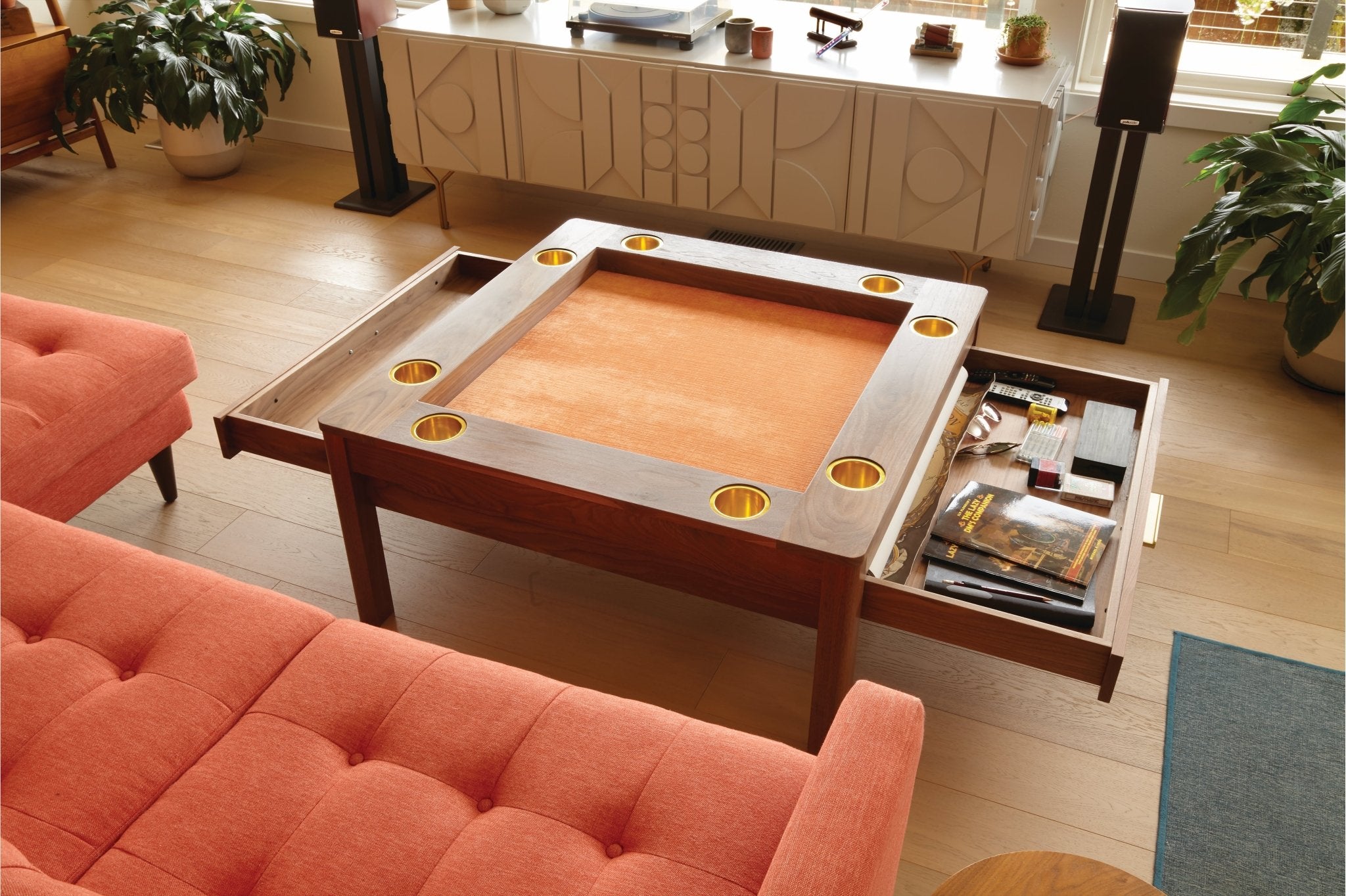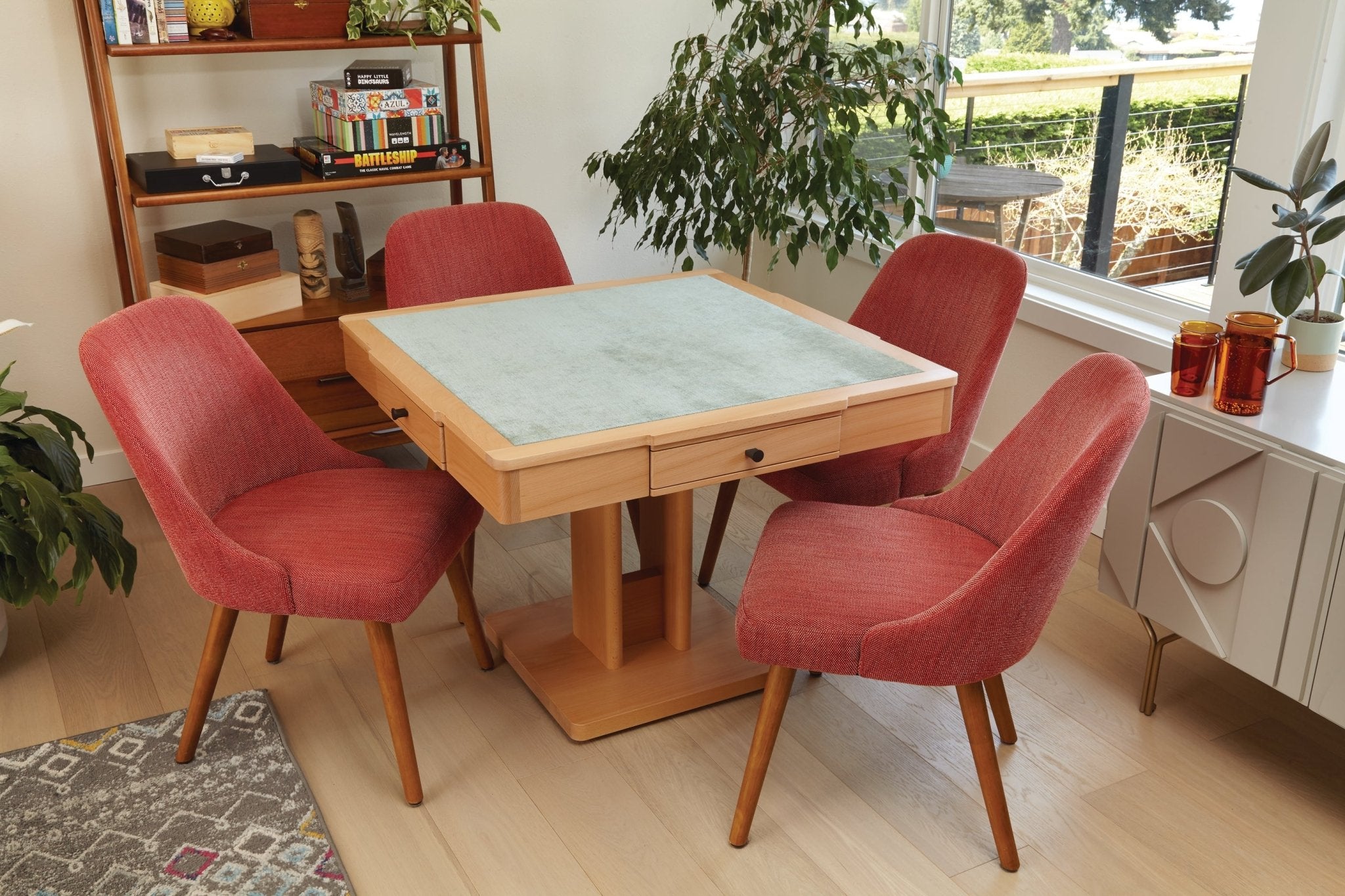How To Play Mahjong For Beginners & Experts
If you have never played Mahjong, it can seem a little complicated. This tends to put people off before they even try to play the game! In reality, Mahjong is incredibly easy to learn and, while it takes a little nuance, it's one of the most interesting games you can play.
In this guide, we'll walk you through how to play Mahjong - from understanding the basics all the way to some expert tips and tricks. Before you know it, you'll be a Mahjong expert!
Understanding The Basics
Mahjong is perhaps one of the best board games of all time - or, at least, one of the most popular. If you want to get started and play with your family and friends, you may need to take a minute to learn the basics of the game first.
To get started with Mahjong, you need to have all the components - and there are a few. These include 144 Mahjong tiles (although some versions only use 136 tiles):
-
108 suit tiles: Made up of 36 Circle, Character, and Bamboo tiles that range from one to nine. There should be four sets of each.
-
16 Wind tiles: The wind tiles include four East, South, North, and West tiles.
-
12 Dragon tiles: You should have four Red, Green, and White Dragon tiles.
-
8 bonus tiles: Depending on which version of the game you're playing, you may also have eight bonus tiles: four Flower tiles and four Season tiles.
In addition to your tiles, you'll also need two standard six-sided dice and racks to hold your tiles, although this is completely optional. And if you really get into the game, you might also be interested in a Mahjong game table.
Remember, the game requires at least four players, with some versions allowing for three. So if you'd rather play a two-player board game, this may not be the best pick. But, if you're hosting a board game night and have enough players, let's keep learning how to play Mahjong!
Setting Up The Game
Perhaps one of the most important parts of playing Mahjong is setting the game up. You first need to determine who the dealer will be and then build the wall of tiles.
Determining the dealer
At the start of the game, each player will roll the dice, and the player with the highest dice roll will become the dealer (East Wind).
Once you know who the dealer is, the rest of the players will be assigned a direction. These directions are important for scoring since certain combinations of tiles with the player's wind direction can earn them bonus points.
-
The player to the right of the dealer is South Wind.
-
The player directly across from the dealer is West Wind.
-
The player to the left of the dealer is North Wind.
Building the wall of tiles
Before the tiles are dealt, they are shuffled face-down on the table. Each player will then build a wall that is 17 tiles long and two tiles high in front of themselves. Then, the process works as follows:
-
The dealer will roll the dice again to determine where to break the wall.
-
The dealer counts the total on the dice and then counts the tiles on the right edge of their wall to break it.
-
The tiles to the left of the breaking point are then used for dealing. Starting from this point and moving clockwise, the dealer gives each player 13 tiles and one extra 14th tile to start the game.
-
The dealer then discards one tile to start the game, which begins to the right and moves in a counter-clockwise direction.
-
The discarded tile is placed face up in the center of the table for everyone to see.
Playing Mahjong
After the dealer places the discarded tile in the center of the table, the game begins.
-
On each player's turn, they need to draw a tile from the wall, or they can draw the most recently discarded tile.
-
The player must then discard one of their tiles and place it face up in the middle of the table.
-
Play continues counter-clockwise as players draw and discard their tiles.
Claiming tiles
There are several ways to claim different sets of tiles. These include:
-
Pong: This is a set of three identical tiles. If a player has two identical tiles in their hand and a discarded tile will complete the set, they can claim it by saying "Pong" and showing their set of tiles. The turn then skips to this player.
-
Chow: A Chow is a run of three consecutive numbers in the same suit. The player can claim the most recently discarded tile if it completes their number set by saying "Chow". However, you can only claim a Chow if the discarded tile comes from the player before you.
-
Kong: This is a set of four matching tiles. For example, four of the same tile number from each suit. The player will claim it using a previously discarded tile and saying "Kong" (the same way that they claim a Pong), and then can also draw an extra tile from the wall.
Rules for forming melds and winning
For a winning hand, you need to complete four sets (melds) and one pair and declare "Mahjong". But it's important to know that there are two different types of melds:
-
Exposed melds: These are melds that are formed using discarded tiles and placed face up on the table for all the other players to see.
-
Concealed melds: These are melds that are formed by only using tiles drawn from the wall, and are kept hidden until the player declares "Mahjong".
Advanced Playing Strategies
If you're already familiar with the basic rules and mechanics of Mahjong, it may be time to step up your game with these expert tips and tricks.
Watching other players
Remember to watch the discarded tiles closely.
By keeping an eye on what tiles are being discarded, you can easily deduce a player's potential hand combinations. You can also track exactly which tiles a player is picking up to help with your deductions, which will make them more accurate.
Some expert players may even avoid discarding certain tiles to stop their opponents from winning, which can be a great strategy if you've kept a close watch on those discarded tiles!
Knowing when to choose a concealed vs exposed meld
Knowing when to "show your hand" is really important. And, the more you play, the easier it will be to determine when the time is right for a concealed or exposed meld.
Concealed melds may give you a strategic advantage when you're playing since you can easily hide information, but exposed melds may give you a better opportunity to score.
Prioritizing tiles and sets
Once you learn the ropes, it's time to learn how to prioritize your Mahjong tiles. Expert players usually prioritize tiles and sets based on their strategic value and the current state of the game. They'll focus on collecting tiles more likely to form high-scoring combos.
Additionally, understanding the probability of drawing certain tiles and adjusting your strategy can help you to form your melds more quickly.
FAQs
Is Mahjong a good family game?
Although Mahjong can be easy to learn, it can be a bit too advanced for kids. So, if you're planning on sitting around the family room and playing Mahjong with the kids, that may not work out.
But that doesn't mean you shouldn't have family game night! In fact, board games have great psychological benefits for kids and should be encouraged. Instead of Mahjong, you should check out some other board games for kids of all ages.
Whether you're playing classic card games or something a little more advanced like a tabletop RPG, there are plenty of other great games to pick from. It may even be a good idea to break out some vintage game favorites like Catan or Scrabble!
Can I play Mahjong on a board game table?
You can absolutely play Mahjong on a custom board game table! For example, The Mimosa is a fantastic dual-purpose table that can be used for standard board games, hosting poker nights - or really anything else you could imagine!
Are there different variations of Mahjong?
Yes! There are actually several different variations of the game, each with its own set of rules and scoring systems. Some of the most well-known versions of the game are:
-
American Mahjong - also known as National Mah Jongg.
-
Chinese Mahjong, which is also referred to as "the game of a hundred intelligences".
-
Hong Kong Mahjong, which is usually more fast-paced with a simple scoring system.
-
Japanese Mahjong or Riichi Mahjong, which is played with 136 tiles.
-
European and British Mahjong, which have both been adapted for Western players.
Final Thoughts
Now that you know how to play Mahjong, it's time to get out there and wow your family and friends with your new-found tricks. Just remember: Practice makes perfect, and once you master the basic rules and find your feet, you'll be able to use the expert tips to enhance your skills even further!



